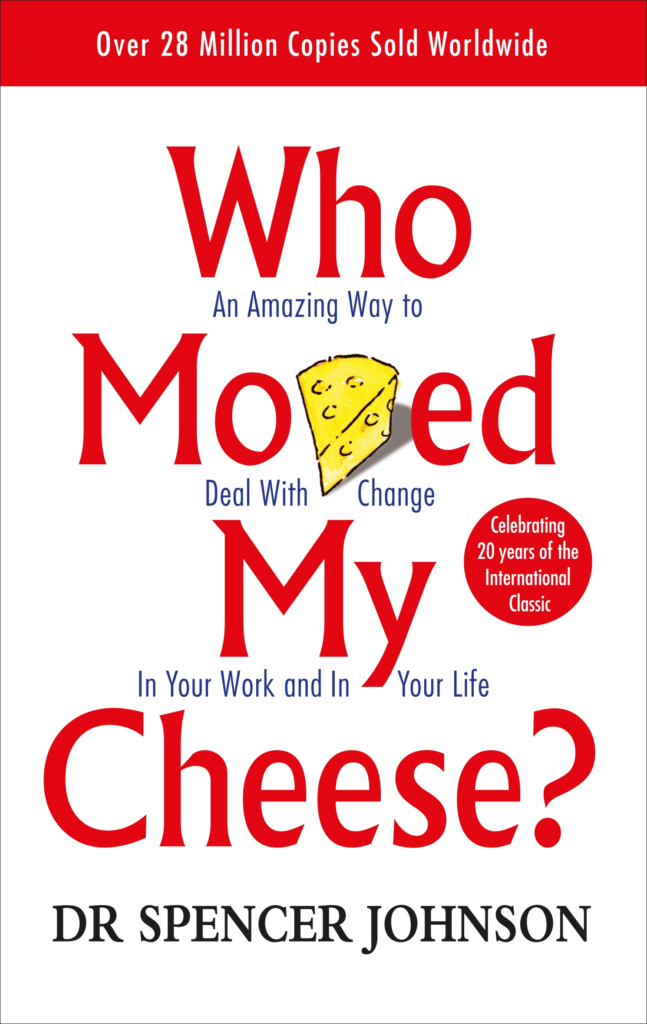I regularly read or listen to business books as assigned reading at work and for personal development. As my time has been limited recently, I’ve been reaching for the cheating method – reading an online abstract – more often. I considered why am I reading the short abstracts instead of the longer works – and my conclusion was that many business books suffer from one of three problems.
Table of Contents
Business Books with Weird Metaphors, Fluffy Animals, and Bizarre Parables
Business books consistently use extended metaphors or parables in an effort to make the content more relatable to the reader. While authors may be trying to make the content more digestible or relatable, often the metaphors insults the reader’s intelligence or makes the book much longer than necessary.
My most recent read contained an unnecessary, extended metaphor. Tom Searcy and Barbara Weaver Smith wrote “Whale Hunting” about pursuing larger B2B sales. While the idea is provocative, the authors wrapped the point up in a long comparison to Inuit whale hunting. While they argue lots of respect for Inuit whale hunters, I found the comparison consistently questionable – maybe even offensive – and detracted from the overall message from the book. Moreover, adding these metaphors adds significant length to the book without adding any substance.

I also enjoy hating on business books that use fluffy animals to make a point. Spencer Johnson’s “Who Moved My Cheese” renders a point about adapting to change into an unreadable and nonsensical parable with two mice in a maze in a made up situation that would never occur. I admit to twitching when this book comes up in conversation. Managers have gifted it to me three times… right before a corporate restructuring is about to occur. I’m guessing that there is an HR toolkit on layoffs and restructurings that specifically says to give this book out as a hidden warning that a layoff is coming. So not only do employees have to adapt through difficult restructuring – they also get their intelligence insulted by this book.

So the first tip for business book writers: if you feel like your argument is more relatable by dressing it up in metaphor, parable, or animal stories, just don’t. Your argument should stand alone and not insult your readers.
Business Books that Perform Death by Example
The second challenge with much of business literature is that many authors support their point through exhaustive example. Having examples illustrates the argument, provides real life color, and shows that the author has researched their argument thoroughly. Many authors, though, go overboard and use every example that they can find. These example cause the length of the book to become much longer than needed, require a larger commitment to read, and often are unnecessary.

One book that commits this sin is the otherwise great “High Output Management” by Andy Grove. While Grove’s book has a lot of really excellent content, it’s a struggle at times to get through due to example after example from Intel and others – and often uses multiple examples for one point. At one point, Andy Grove even includes a random press release from another company. Again – the content is great – but the number and breadth of examples makes the content difficult to read.
A better approach would be to include the argument with one short example to illustrate the point and provide direction on how to implement the idea. Other examples can be either relegated to a website, an appendix, or summarized into a chart or other visual. Tighter editing of examples leads to a stronger argument.
Business Books often commit Look Ahead Bias
Look ahead bias occurs when authors look at successful companies and then try to ascribe what made them successful. The problem with this approach is that what made those companies successful may not be present in their current practices; or may not differentiate themselves from companies that they left behind. For instance, many companies have stand up meetings – but that certainly doesn’t imply that every company with a standup meeting will be successful.

The granddaddy of this sin is Tom Peters and Robert Waterman’s “In Search of Excellence: Lessons From America’s Best Run Companies.” Besides suffering from death by example, the book tried to pick the current most successful companies and then asked what made them successful. Unfortunately, the book doesn’t stand the test of time. Some of the book’s choice of high performing companies leaves much to be desired when taking a longer view. Companies like Eastman Kodak, NCR, and General Electric had lack luster performance and failed to adapt to a changing economy. Moreover, the roots of their failures to adapt are even present at the time of the book’s writing.
When you watch for this bias in business books, you find it everywhere – and often it weakens or invalidates many authors arguments. When making arguments, it’s important to not only show why a characteristic leads to better outcomes – but also why that characteristic separates poor outcomes from good outcomes. Even better is when the author shows the predictive value by selecting companies that will do well before the company has done well!
Conclusions
Spending time reading business books is important – it leads to better understanding of new ideas and how to be a better leader and manager. With that reading though comes many common frustrations. My hope is that business book authors begin to recognize the limitations in their works and improve them. For me, I’m spending more time reading research papers, reading abstracts of books, and listening to podcasts instead of reading as many book full length.

